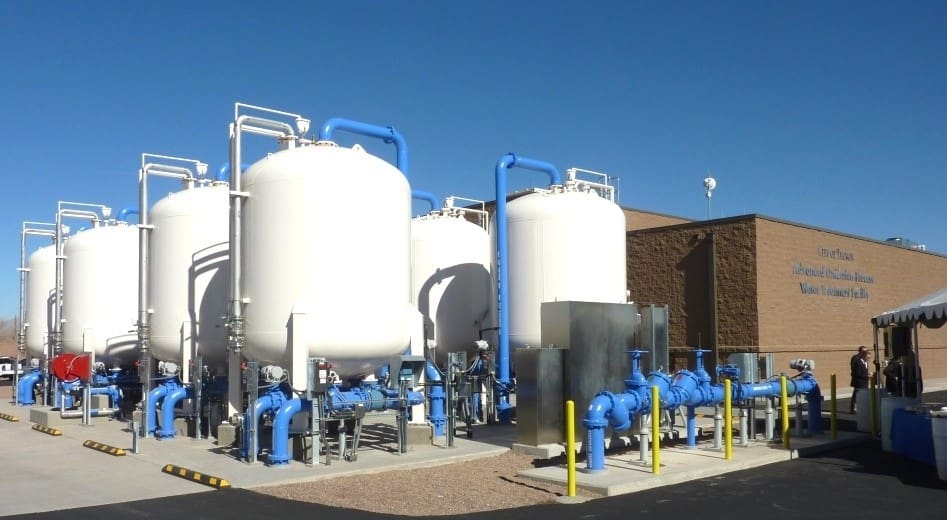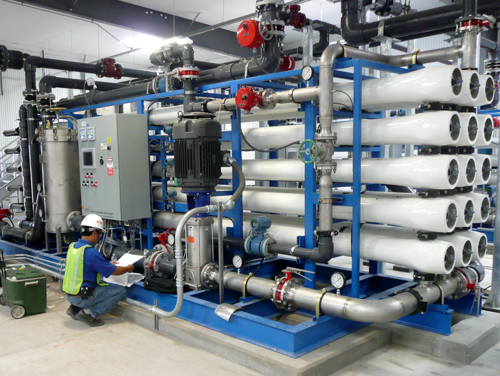Cutting-edge PFAS Therapy Solutions for Safer Water
The boosting frequency of PFAS contamination in water supplies requires a critical examination of ingenious therapy remedies. Furthermore, emerging bioremediation techniques provide an even more lasting method to dealing with PFAS difficulties. pfas management.
Summary of PFAS Contamination
PFAS contamination has become a considerable environmental and public wellness problem. Per- and polyfluoroalkyl materials (PFAS) are a group of artificial chemicals recognized for their determination in the setting and body, leading them to be typically referred to as "permanently chemicals." These substances have actually been extensively utilized in numerous markets, including firefighting foams, water-repellent materials, and food product packaging, mainly because of their water- and grease-resistant buildings.
The widespread use of PFAS has caused their discovery in dirt, water materials, and even in the blood of human beings and animals. Researches have linked PFAS direct exposure to numerous health concerns, including developing impacts in infants, immune system dysfunction, and numerous kinds of cancer. Furthermore, the ecological perseverance of these compounds complicates their destruction and removal, increasing worries about long-term ecological impacts.
Regulative bodies are increasingly applying rigorous standards to keep track of and minimize PFAS levels in alcohol consumption water and various other ecological mediums. As awareness of PFAS contamination expands, it has ended up being important for neighborhoods and sectors to look for reliable therapy remedies to minimize exposure and safeguard public health.
Advanced Filtering Technologies
As the necessity to resolve PFAS contamination escalates, advanced purification innovations have become a critical component in the removal initiatives focused on removing these persistent chemicals from water resources. These technologies leverage advanced devices to properly target and record PFAS compounds, which are infamously resistant to traditional therapy approaches.
Among the most encouraging techniques is the usage of granular triggered carbon (GAC), which adsorbs PFAS molecules because of its high surface area and porous structure. This technique has actually been extensively executed in both municipal and commercial setups, demonstrating substantial reductions in PFAS concentrations. Furthermore, ion exchange materials have actually obtained grip, especially developed to selectively bind PFAS ions from water, hence facilitating their removal.
Membrane purification technologies, such as reverse osmosis and nanofiltration, likewise reveal effectiveness in PFAS elimination by physically dividing impurities from water - pfas management. These systems can accomplish high levels of pureness, making them appropriate for drinking water applications
Chemical Therapy Innovations
Many chemical therapy developments are being explored to effectively attend to PFAS contamination in water materials. One appealing strategy includes making use of advanced oxidation procedures (AOPs), which make use of powerful oxidants such as ozone, hydrogen peroxide, or chlorine dioxide combined with UV light to damage down PFAS compounds into much less dangerous compounds. This method has actually demonstrated efficiency in lab settings, revealing potential for scalability in linked here real-world applications.
Another cutting-edge method is the advancement of ion-exchange materials particularly designed to target PFAS. These resins can uniquely adsorb PFAS compounds from water, enabling for their removal throughout treatment processes. Current innovations have enhanced the efficiency and ability of these materials, making them a positive choice for water therapy centers.
In addition, scientists are checking out making use of chemical agents like persulfate and ferrous ions to enhance the deterioration of PFAS in polluted water. These agents can generate chemical reactions that facilitate the malfunction of persistent PFAS substances.
Emerging Bioremediation Methods
Recent advancements in chemical therapy advancements have led the way for checking out bioremediation methods as a sensible option for dealing with PFAS contamination. Bioremediation harnesses the natural metabolic processes of microorganisms to break down or change contaminants, making it an attractive approach for dealing with persistent impurities like PFAS.
Emerging techniques in bioremediation consist of making use of genetically engineered microbes that can especially target and break down PFAS substances. These microbial pressures are being established for their enhanced degradation capacities, boosting the performance of the removal process. Furthermore, researchers are examining the potential of plant-assisted bioremediation, where specific plant varieties might uptake and sequester PFAS from polluted dirt and water.
One more promising approach is the application of bioaugmentation, which entails introducing beneficial microorganisms right into polluted atmospheres to increase the destruction i was reading this of PFAS. This technique can facilitate faster remediation timelines and improve general efficiency.

Regulatory Frameworks and Specifications
A detailed governing structure is essential for effectively handling PFAS contamination and guaranteeing public wellness protection. try this site The raising acknowledgment of per- and polyfluoroalkyl materials (PFAS) as toxic wastes has actually motivated numerous federal and state firms to establish criteria that control their presence in water materials. The United State Environmental Security Company (EPA) has developed wellness advisories and is working towards setting enforceable limits for PFAS in drinking water.
State-level regulations vary dramatically, with some states embracing more stringent guidelines than those proposed by the EPA. These policies commonly include optimum pollutant levels (MCLs) for specific PFAS substances, monitoring needs, and reporting commitments for water utilities. In addition, emerging frameworks concentrate on the remediation of contaminated websites, emphasizing the need for efficient therapy modern technologies.

Final Thought
In final thought, the development and implementation of ingenious PFAS treatment remedies are important for addressing the prevalent concern of water contamination. Advanced filtration modern technologies, chemical treatments, and emerging bioremediation techniques jointly provide a multifaceted method to efficiently minimize and degrade PFAS levels. As regulatory frameworks continue to develop, incorporating these modern technologies will certainly be necessary to protect public health and bring back the integrity of infected water resources, ultimately adding to a cleaner and much safer atmosphere.